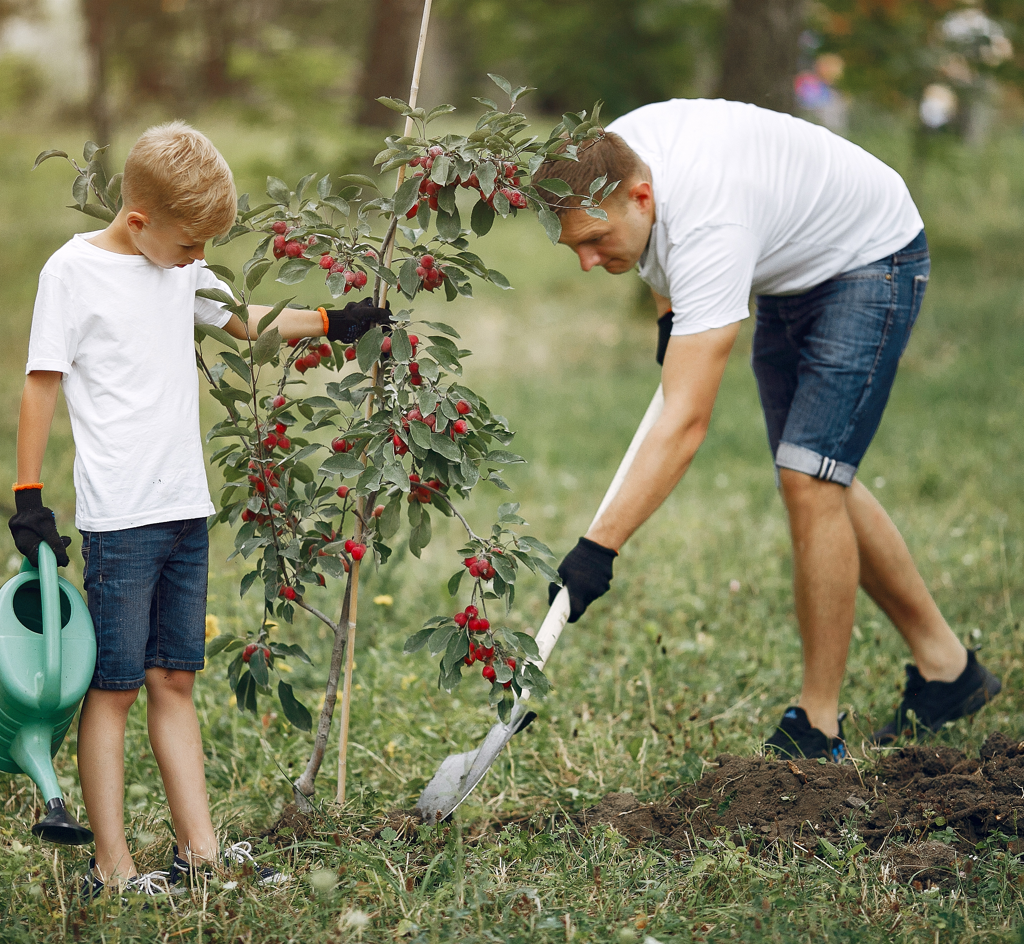How to Plant Fruit Trees: A Comprehensive Guide
Introduction
Planting fruit trees is an incredibly fulfilling activity. Not only do you get to enjoy fresh, homegrown fruits, but you also create a beautiful and sustainable landscape in your backyard. From apples and peaches to exotic citrus varieties, growing fruit trees is a rewarding process that anyone with a little patience and planning can accomplish.
In this guide, we’ll walk you through every step of planting and maintaining fruit trees, ensuring you’re equipped to create your own orchard paradise.
Choosing the Right Fruit Tree
Understanding Your Climate and Hardiness Zone
The first step in planting fruit trees is choosing a variety that thrives in your local climate. Hardiness zones, which indicate the minimum temperatures a plant can survive, are an essential consideration. For instance, citrus trees like lemons thrive in warmer zones, while apples and pears can endure colder climates.
Selecting Fruit Varieties
Your preferences and the available space will guide your choice. Popular options include:
• Apples: Ideal for cooler climates with numerous cultivars like Fuji and Granny Smith.
• Peaches: Thrives in warm regions and produces juicy, sweet fruit.
• Citrus: Lemons, oranges, and limes prefer subtropical conditions.
Considering Space and Soil Needs
Fruit trees come in different sizes: dwarf, semi-dwarf, and standard. Dwarf varieties are perfect for smaller gardens or container planting, while standard trees need ample space to spread out. Additionally, soil health is crucial. Make sure the soil is nutrient-rich and allows proper drainage.
Preparing for Planting
Selecting the Ideal Location
Choose a site that receives full sun—at least six to eight hours daily. Fruit trees also need good air circulation to prevent disease and ensure healthy growth. Avoid low-lying areas prone to frost pockets.
Testing and Amending the Soil
Make sure to check the pH and nutrient content of your soil before planting. Most fruit trees prefer a slightly acidic to neutral pH (6.0–7.0). You can adjust the soil with lime to reduce acidity or sulfur to increase it. Add compost or well-rotted manure for better fertility.

Tools and Materials You’ll Need
Gather essential tools to make planting easier:
1.A sturdy spade or shovel
2.Gardening gloves
3.Mulch (like wood chips or straw)
4.Tree stakes and ties for support
5.A watering can or hose
Planting Fruit Trees
When to Plant Fruit Trees
The dormant season is the best time to plant, typically from late winter to early spring. This allows the roots to establish before the tree’s energy is diverted to leaf and fruit production.
Steps to Plant Bare-Root Trees
Bare-root trees are more economical and adapt quickly to the soil. Here’s how to plant them:
1.Soak the Roots: Immerse the roots in water for several hours before planting to rehydrate them.
2.Dig the Hole: Make a hole twice as wide and deep as the root spread.
3.Position the Tree: Place the tree in the hole with the graft union (a swollen area above the roots) just above ground level.
4.Backfill and Water: Fill the hole with soil, firming it gently to remove air pockets. Water thoroughly to settle the soil.
Steps to Plant Container-Grown Trees
For potted trees, follow these steps:
• Loosen the Roots: Gently tease out the roots to encourage outward growth.
• Prepare the Hole: Dig a hole slightly wider than the root ball.
• Plant and Water: Position the tree at the same depth it was in the container, fill the hole, and water deeply.
Spread a layer of mulch around the base to conserve moisture and keep weeds at bay.
Caring for Young Fruit Trees
Watering and Mulching Tips
Water newly planted trees regularly—once a week or more during dry periods. Mulch helps conserve soil moisture and prevents weed competition. Leave a small gap of a few inches between the mulch and the trunk to prevent rotting.
Protecting Against Pests and Diseases
Common pests like aphids and caterpillars can harm young trees. Try natural solutions such as neem oil or bring in helpful insects like ladybugs. Tree guards can protect against damage from animals like deer or rabbits.

Supporting Tree Growth with Pruning
Prune your tree in its first year to establish a strong structure. Remove crossing or weak branches, ensuring proper airflow and sunlight penetration.
Long-Term Maintenance
Fertilizing Your Fruit Tree
As your tree grows, feed it annually with a balanced fertilizer high in nitrogen. Compost and fish emulsion are great organic alternatives.
Proper Pruning Techniques
Prune during the dormant season to encourage fruit production and maintain the tree’s shape. Concentrate on cutting away any dead, infected, or overly crowded branches.
Managing Pests and Common Diseases
Regularly inspect your tree for signs of issues like powdery mildew or scab. Organic fungicides and insecticides can help manage these problems effectively.
Harvesting Your Fruit
Knowing When Your Fruit is Ready
Timing is everything. Fruits should be firm but give slightly when pressed. The color, aroma, and ease of detachment are also good indicators of ripeness.
Proper Harvesting Techniques
Gently twist or cut fruits from the tree to avoid damaging the branches.
Storing and Using Fresh Fruit
Store your harvest in cool, dry conditions. Fruits like apples can last months, while softer fruits like peaches are best consumed or preserved quickly.
Conclusion
Planting and nurturing fruit trees is an investment in both time and effort, but the rewards are worth it. Not only will you enjoy fresh, delicious fruit, but you’ll also create a greener and more sustainable environment. With proper care, your trees will provide bountiful harvests for years to come.
